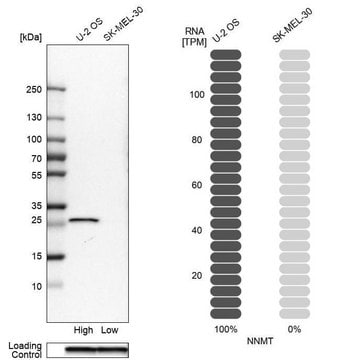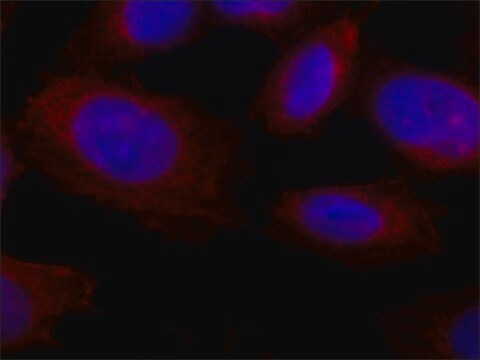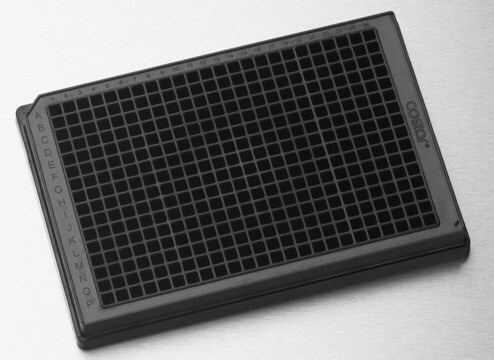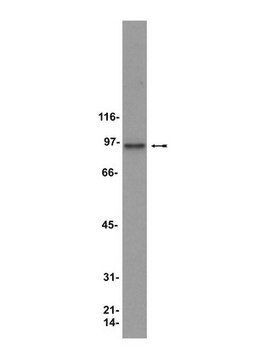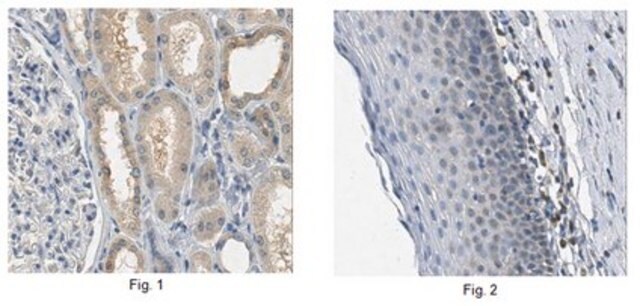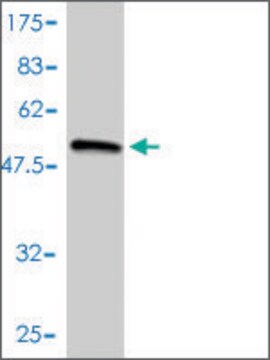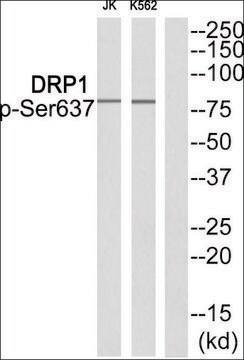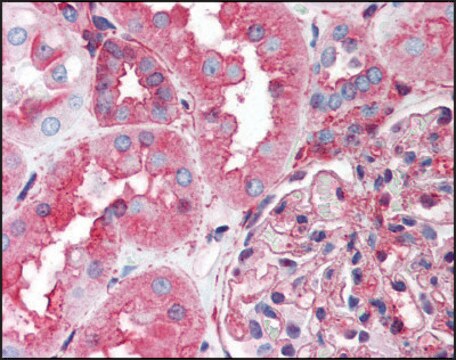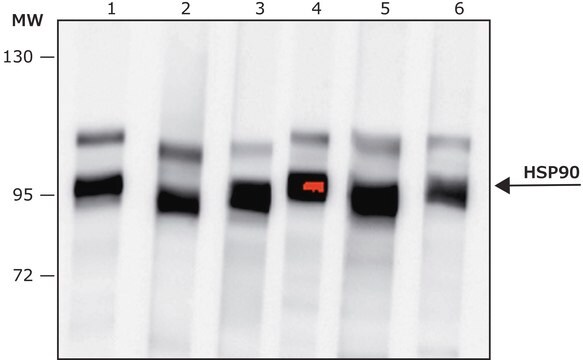MABC1106
Anti-Hsp90 alpha Antibody, clone 1G6-D7
clone 1G6-D7, from mouse
Sinonimo/i:
Heat shock protein HSP 90-alpha, Heat shock 86 kDa, HSP 86, Lipopolysaccharide-associated protein 2, LAP-2, LPS-associated protein 2, Renal carcinoma antigen NY-REN-38
About This Item
Prodotti consigliati
Origine biologica
mouse
Forma dell’anticorpo
purified immunoglobulin
Tipo di anticorpo
primary antibodies
Clone
1G6-D7, monoclonal
Reattività contro le specie
human
Confezionamento
antibody small pack of 25 μg
tecniche
ELISA: suitable
immunoprecipitation (IP): suitable
inhibition assay: suitable
western blot: suitable
Isotipo
IgG1κ
N° accesso NCBI
N° accesso UniProt
modifica post-traduzionali bersaglio
unmodified
Informazioni sul gene
human ... HSP90AA1(3320)
Descrizione generale
Specificità
Immunogeno
Applicazioni
ELISA Analysis: A representative lot detected Hsp90 alpha in ELISA applications (Zou, M., et. al. (2017). Oncogene. 36(15):2160-2171).
Affects Function Analysis: A representative lot blocked parental MDA-MB-231 cell invasion in a dose-dependent manner. (Zou, M., et. al. (2017). Oncogene. 36(15):2160-2171).
Western Blotting Analysis: A representative lot detected Hsp90 alpha in Western Blotting applications (Zou, M., et. al. (2017). Oncogene. 36(15):2160-2171).
Inhibits Activity/Function Analysis: A representative lot inhibited both de novo tumor formation and expansion of already formed tumors in mice. (Zou, M., et. al. (2017). Oncogene. 36(15):2160-2171).
Qualità
Western Blotting Analysis: 1 µg/mL of this antibody detected Hsp90 alpha in MDA-MB-231 cell lysate.
Descrizione del bersaglio
Stato fisico
Altre note
Not finding the right product?
Try our Motore di ricerca dei prodotti.
Certificati d'analisi (COA)
Cerca il Certificati d'analisi (COA) digitando il numero di lotto/batch corrispondente. I numeri di lotto o di batch sono stampati sull'etichetta dei prodotti dopo la parola ‘Lotto’ o ‘Batch’.
Possiedi già questo prodotto?
I documenti relativi ai prodotti acquistati recentemente sono disponibili nell’Archivio dei documenti.
Il team dei nostri ricercatori vanta grande esperienza in tutte le aree della ricerca quali Life Science, scienza dei materiali, sintesi chimica, cromatografia, discipline analitiche, ecc..
Contatta l'Assistenza Tecnica.